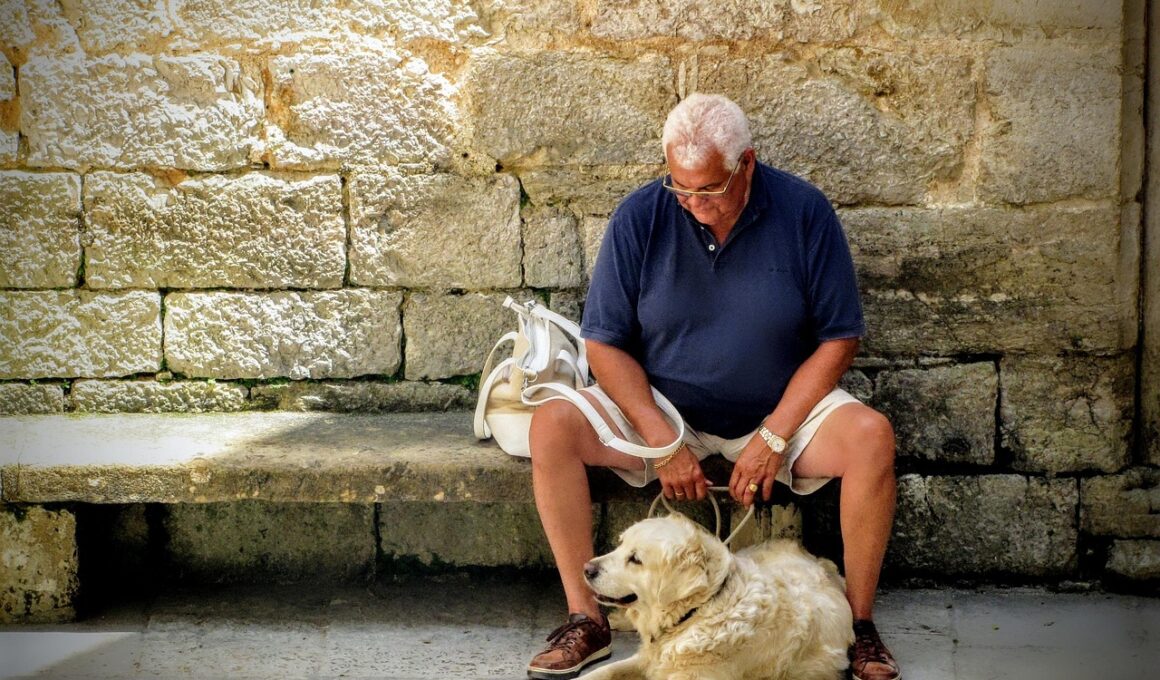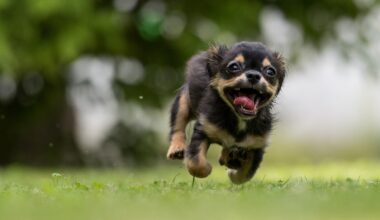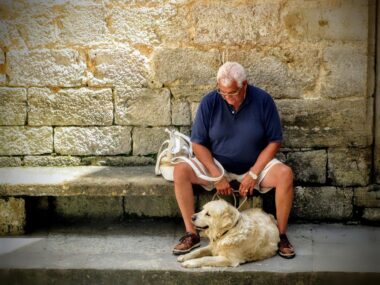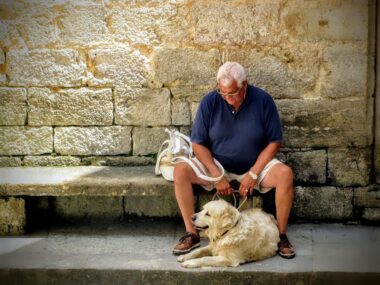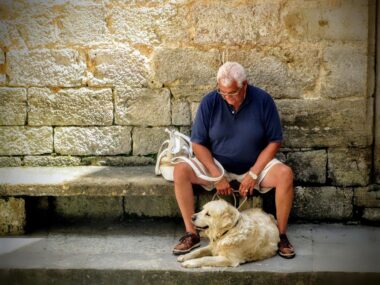Socializing Older Dogs: Understanding Their Body Language
Socializing older dogs can be a rewarding yet challenging process. Many older dogs come with established habits and personalities, making it essential to understand their body language during interactions. Unlike puppies, older dogs may have experienced various social situations and formed opinions about them. Recognizing signs of discomfort or aggression becomes vital to ensure a positive experience for both the dog and others in the environment. Understanding key signals such as growling, gritting teeth, or a stiff tail can significantly impact how you approach socialization. For instance, a relaxed dog may have a loose body posture, while an anxious dog may exhibit tense muscles. If you notice any signs of discomfort, it’s important to give the dog space. Positive reinforcement can also play a key role in making socialization a success. Treats, verbal praises, and gentle petting can encourage desirable behaviors, fostering confidence in your older dog when meeting new friends. Additionally, knowing when to step back and reassess the situation keeps your dog stress-free, as creating a safe and nurturing environment is crucial for successful socialization.
Every dog has unique communication cues that reflect their feelings. Older dogs often have subtle body language that may not be as apparent as in younger dogs. For example, a dog that turns its head away is expressing discomfort or disinterest. Similarly, a wagging tail does not always equal happiness; the tail’s position and movement speed can convey a range of emotions, from excitement to agitation. Therefore, it’s essential to pay closer attention to the context surrounding these behaviors. When socializing your dog, try to initiate slow introductions, allowing the older dog to feel in control. Gradual interactions with new dogs or people can help build confidence and foster trust. Environments that excite or overwhelm dogs can further complicate socialization efforts. If you’re at a dog park, ensure first meetings happen in a more controlled situation where distractions are minimal. Use leash control to prevent overstimulation and observe how your dog conveys stress or hostility. The ultimate goal is to create enjoyable experiences tailored to your dog’s unique personality, strengthening the bond you share with your furry companion.
Recognizing Postures and Signals
In addition to observing body language, understanding the various postures your older dog exhibits during socialization is crucial. The way a dog holds itself can provide insights into its emotional state. For instance, a dog that stands tall with its head raised is often feeling confident or dominant. In contrast, if your older dog is hunched or crouched, it indicates submission or fear, meaning it may benefit from more encouragement during social interactions. Tail position also plays a significant role; a tail held low can suggest anxiety, while a high tail may indicate excitement. Knowing these signals enables you to steer interactions more effectively. Furthermore, facial expressions can reveal a lot about how your dog feels. Relaxed eyes and a soft mouth indicate comfort, whereas a tight jaw or wide eyes might signal distress. Responding promptly to these cues can prevent negative experiences and facilitate a smoother socialization process. The more you learn to recognize your older dog’s unique signals, the more effectively you can assist them in adjusting to social environments and new companions, promoting their happiness.
Socializing older dogs with new dogs or humans can present unique challenges, particularly if the older dog has a history of negative experiences. Previous trauma or a lack of social exposure may lead to fear or aggression. Establishing a routine that incorporates socialization gradually can help. Aim to introduce your dog to one new puppy or person in a calm environment, where distractions are kept to a minimum. Using positive reinforcement, like treats, during these introductions builds trust and encourages desirable interactions. Always monitor body language closely; if your dog begins to show signs of stress, it’s important to take a step back. Safety protocols are crucial when socializing, especially with larger or more energetic younger dogs. Ensure your older dog feels secure and has the option to retreat if they feel overwhelmed. Building a positive association with social encounters takes time, but remaining patient can yield remarkable results. Remember that socialization should never feel forced; a gradual approach respects your dog’s comfort level and supports a healthy mindset. Celebrating small victories will contribute to the overall success of your dog’s socialization journey.
Positive Reinforcement Techniques
Incorporating positive reinforcement into your dog’s socialization routine is highly beneficial. Rewarding your older dog for calm behavior during introductions reinforces their understanding of what is expected while interacting with others. Start using high-value treats, such as small pieces of chicken or favorite toys, whenever your dog remains relaxed in the presence of another animal or person. Over time, this can create a positive association with social situations. The timing of the rewards is crucial; make sure to provide treats immediately after they exhibit desired behavior to reinforce their positive choices effectively. Subsequently, you can gradually phase out treats for verbal praise or pets. Consistency in your approach ensures that your dog clearly understands what behaviors are appreciated. Remember that older dogs might not require as intense socialization as younger dogs, given their past experiences. However, positive reinforcement can still help alleviate anxiety in uncertain situations. Furthermore, using clicker training alongside treat distribution can provide immediate feedback for good behavior. It aids in creating an enjoyable learning environment, fostering confidence in your furry friend throughout this essential process.
Each dog’s journey through socialization varies, and some older dogs may take longer to adjust. Therefore, it is essential to remain patient during this process. Engaging with other dog owners or trainers can provide valuable insights into building effective socialization methods for your older dog. Join classes aimed at older dogs where they can meet new friends in a safe environment, and learn from others’ experiences. Observing how other dogs behave can inform your strategies and help you see what works best for your dog. Additionally, consider using scent enrichment to create interest during socialization sessions. Bringing along familiar items such as your dog’s favorite blanket can provide comfort and reduce anxiety. It is also a good idea to choose environments that your dog feels comfortable in, avoiding overwhelming spaces. Always tailor the pace of socialization based on your dog’s responses. Celebrate small milestones, and recognize that progress may be gradual. Being attentive to your dog’s needs and adjusting your approach will ultimately nurture a positive and enjoyable social experience.
Emotional Support and Socialization
The emotional well-being of older dogs plays a pivotal role in their ability to socialize. Just like humans, dogs experience emotions, which significantly influence their behavior. Older dogs may feel nervous about new experiences primarily due to their age and past interactions. Providing consistent emotional support can ease their transition into socializing with new dogs or people. Spend quality time with your older dog through gentle play or bonding activities that build trust. Establishing a routine can offer a sense of stability and security, crucial elements in promoting adaptable behavior. Understand the importance of limiting intense encounters, especially as older dogs may tire more quickly. An integrating calmer daily interactions rather than overwhelming adventures ensures their emotional state remains stable. Socializing doesn’t just happen in dog parks; it occurs during casual moments at home too. Washing your dog gently, grooming them, or taking leisurely walks through the neighborhood can all reinforce their comfort levels. With proper support systems in place, your older dog will feel valued and cherished, ultimately making socialization a more enjoyable endeavor.
As dogs age, their needs change, and understanding these needs is crucial for helping them socialize successfully. It’s essential to observe how their energy levels and interests may shift over time. Older dogs may prefer relaxed settings and more individual attention than those lively group interactions. Therefore, selecting socialization activities tailored to their preferences can yield better results. Take note of when your dog seems most engaged. It may be during quiet social scenes where the noise is at a minimum. Utilize short, enjoyable meetups with other dogs rather than long, chaotic gatherings, providing frequent breaks for your older dog. Familiarizing them with one dog at a time allows them to make connections without feeling overwhelmed. Proactively addressing discomforts by changing the environment, activity, or companions demonstrates to your dog that their feelings are valid. As trust develops through consistent positive interactions, they may gradually become more open to broader social settings. By recognizing the unique requirements of your older dog, you can foster an enriching social experience, contributing positively to their overall quality of life.
